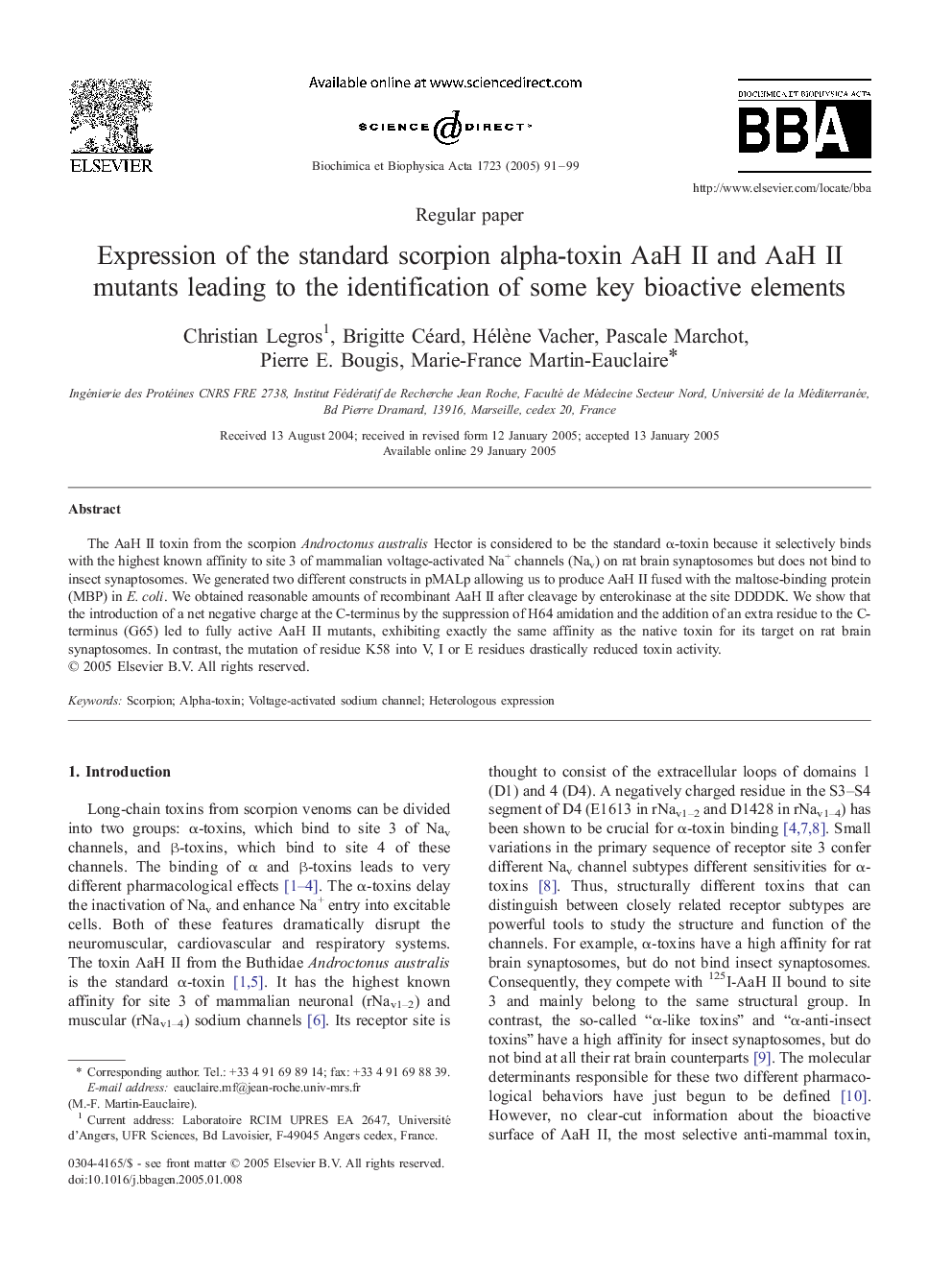| Article ID | Journal | Published Year | Pages | File Type |
|---|---|---|---|---|
| 9886122 | Biochimica et Biophysica Acta (BBA) - General Subjects | 2005 | 9 Pages |
Abstract
The AaH II toxin from the scorpion Androctonus australis Hector is considered to be the standard α-toxin because it selectively binds with the highest known affinity to site 3 of mammalian voltage-activated Na+ channels (Nav) on rat brain synaptosomes but does not bind to insect synaptosomes. We generated two different constructs in pMALp allowing us to produce AaH II fused with the maltose-binding protein (MBP) in E. coli. We obtained reasonable amounts of recombinant AaH II after cleavage by enterokinase at the site DDDDK. We show that the introduction of a net negative charge at the C-terminus by the suppression of H64 amidation and the addition of an extra residue to the C-terminus (G65) led to fully active AaH II mutants, exhibiting exactly the same affinity as the native toxin for its target on rat brain synaptosomes. In contrast, the mutation of residue K58 into V, I or E residues drastically reduced toxin activity.
Related Topics
Life Sciences
Biochemistry, Genetics and Molecular Biology
Biochemistry
Authors
Christian Legros, Brigitte Céard, Hélène Vacher, Pascale Marchot, Pierre E. Bougis, Marie-France Martin-Eauclaire,
